Spring Is Near
“A new bud in spring
Color rising from the earth
banishes winter.”
Haiku by Jason A. Muckley
My grandmother Jessamine was well known by her
family and neighbors as a gifted gardener. She
adored flowers, taking many photos of wild flowers
from spring through summer. Usually she dated her
photos, where they were taken, and often wrote the
Latin name on the envelopes. Someday a biology
student or researcher will be investigating whether
these flowers are still growing in the same locations.
Spring flowers in southeastern Montana include yellow
Buttercups, Johnny-Jump Ups, Yellow Bells, and Shooting
Stars. “Sagebrush Buttercups” or Ranunculus Glaberrimus,
a five -petaled flower, bloom from March through April.
You can find them in grasslands, open forest, rocky outcrops
and plains. They can grow six to twelve inches tall with
spreading stems. Shooting Stars flower about the same
time. Unfortunately, Jessamine’s photo of a shooting star
is slightly out of focus.
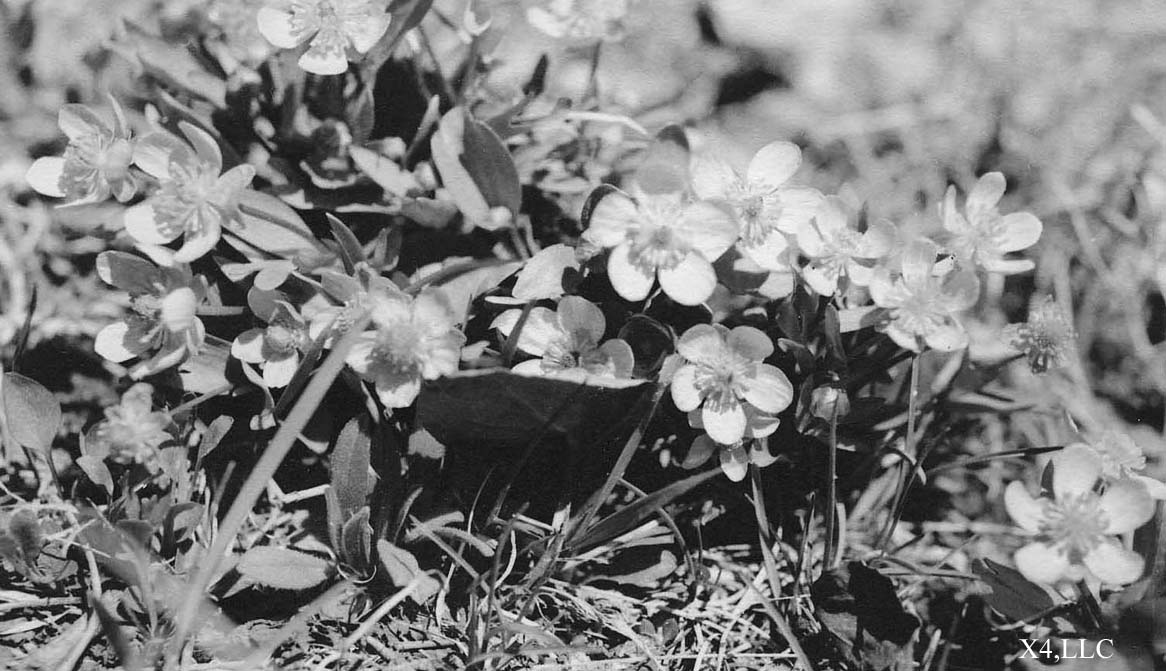
Darling Buttercups
Johnny Jump-Ups are a type of wild pansy or viola. The
difference is that pansies have larger flowers. Johnny-
Jump-Ups are one of a group of rare edible flowers. Their
blooms (along with violets and squash blossoms) can be
picked, washed and added to salads. You can float them in
cocktails or freeze them in ice cubes for a decorative touch
at your next party. I don’t think my grandmother knew this!
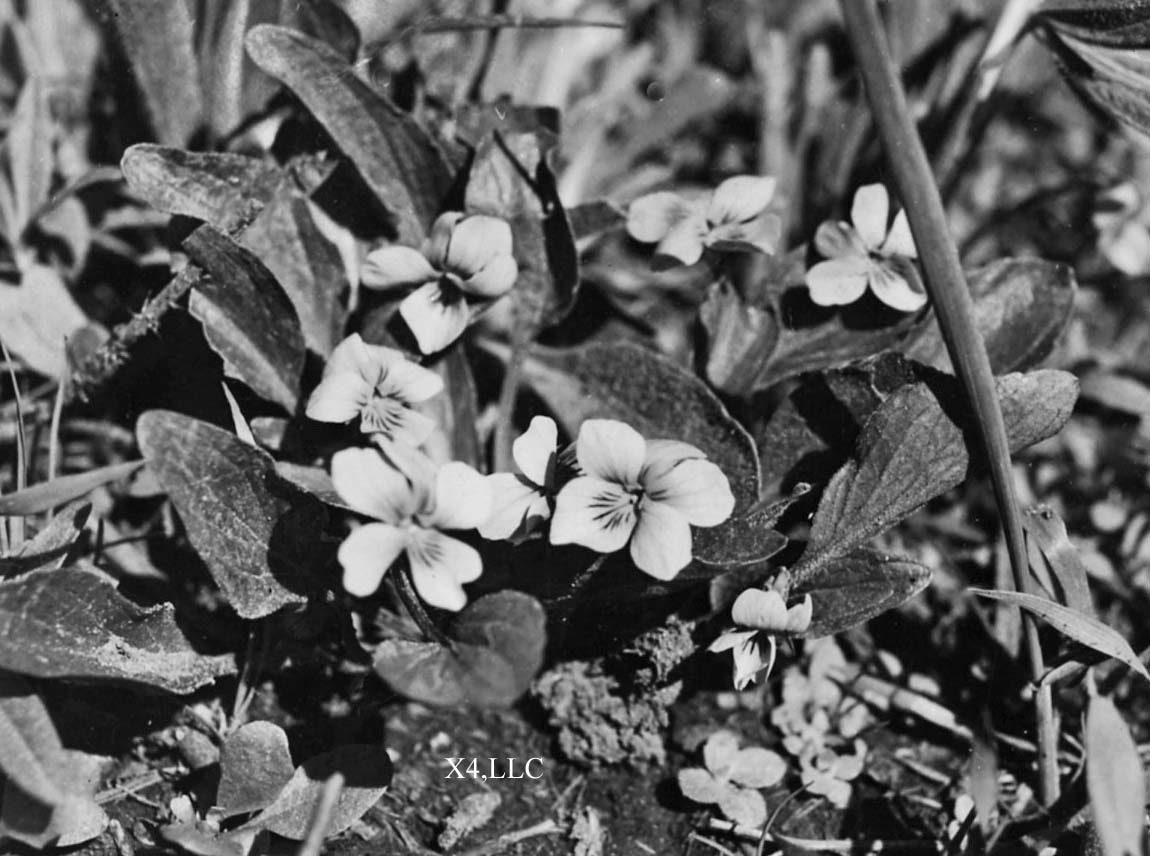
Johnny Jump-Ups
Yellow Bells are a member of the lily family (Liliaceae).
This wild flower is native to the western U.S. and Canada.
It’s a small flower about 3 inches, and seldom more than
8 inches tall. They bloom soon after the snow begins to
melt,which could be anytime in Montana from March to
June. They like to grow on the east facing side of hillsides.
Jessamine took a closeup photo of Yellow Bells with
Buttercups that is rather like a modern painting.
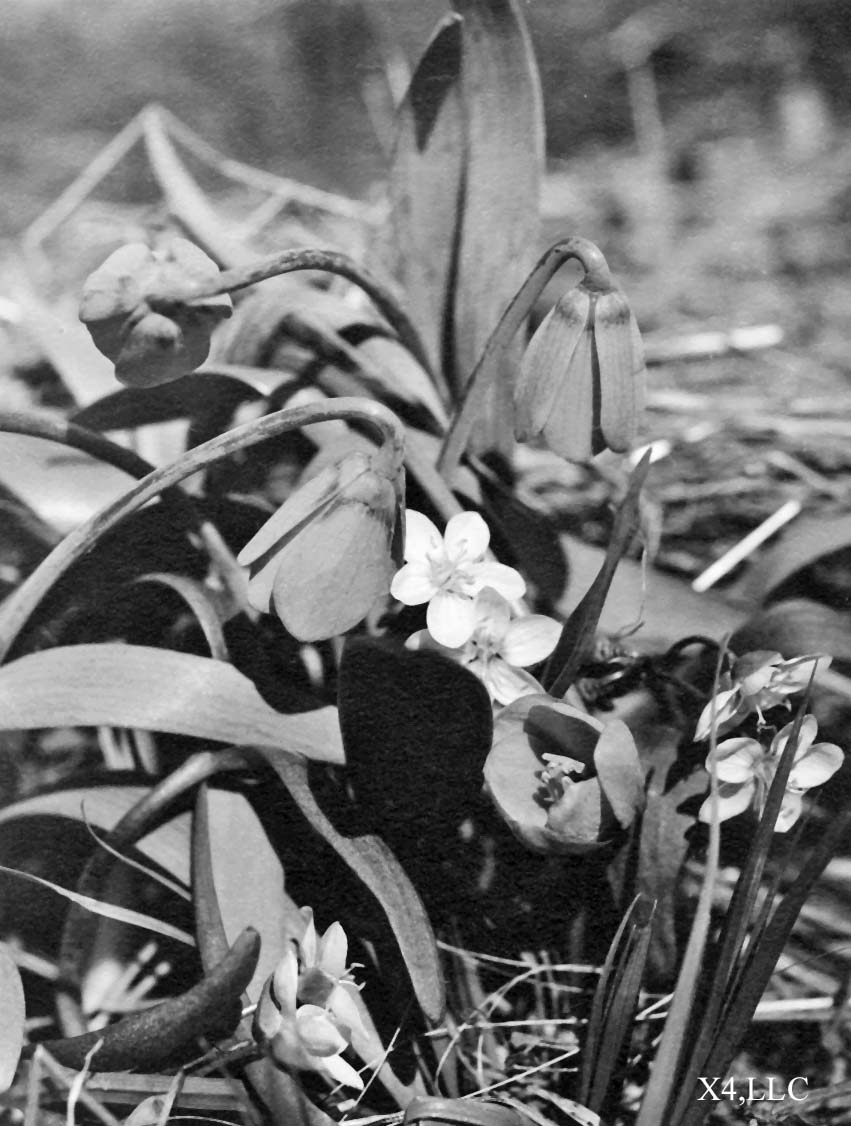
Yellow Bells embracing Buttercups, 1937.
Here are some summertime flowers photographed in
the Bighorn Mountains. California False Hellebore or
Veratrum Viride (don’t you love the Latin?) has a tall
stem of flowers and grows in subalpine meadows or
spruce-fir forests. The California False Hellebore is
rather rare compared to theAmerican False Hellebore in
Montana or Wyoming. When climbing even higher near
Cloud Peak (13,171 feet), Jessamine discovered Parry’s
Primrose growing in the alpine tundra, pretty as you please.
It blooms in summer at high elevations. The flowers are
magenta with yellow eyes, colors you can only imagine in
black & white.
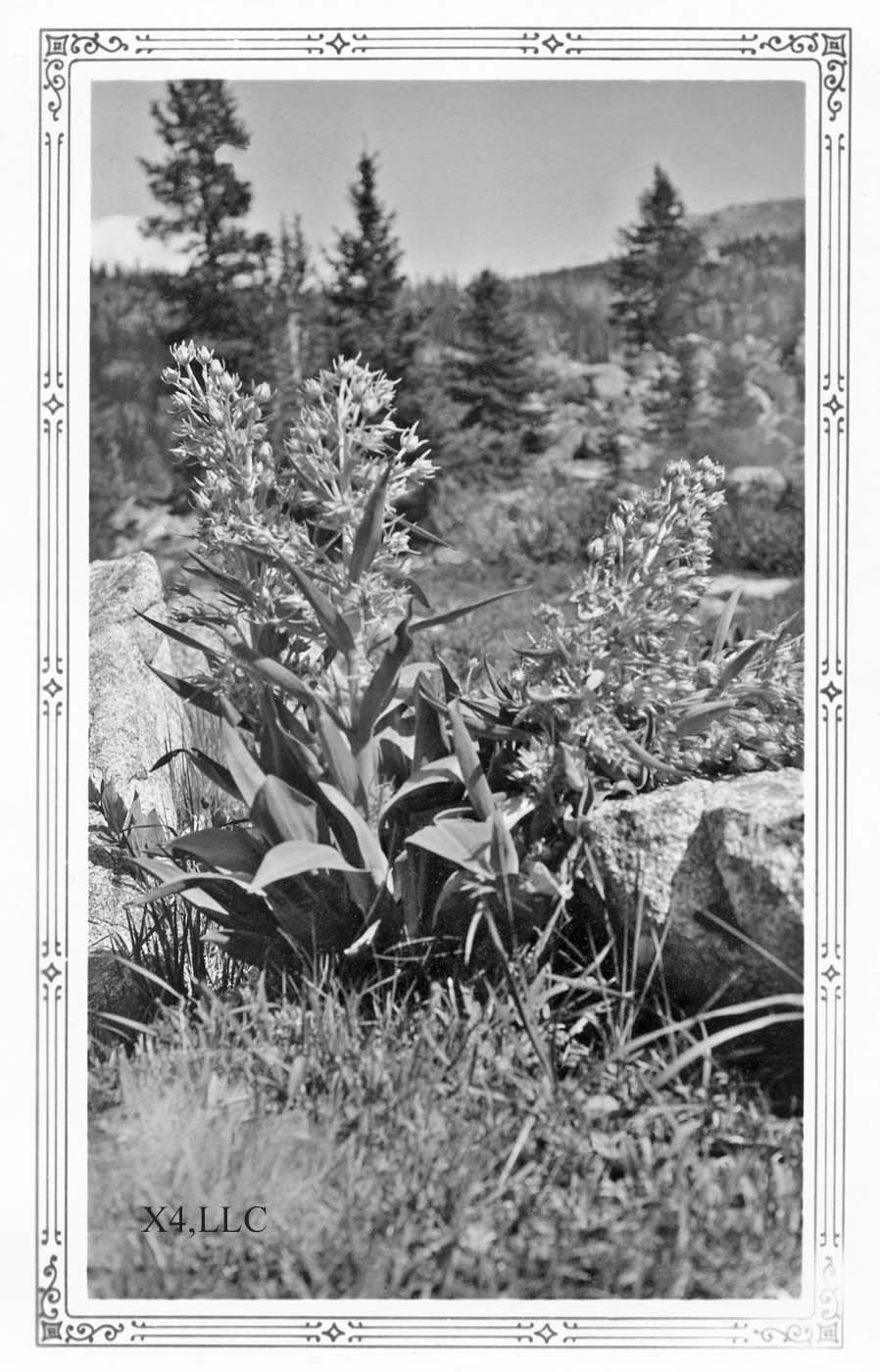
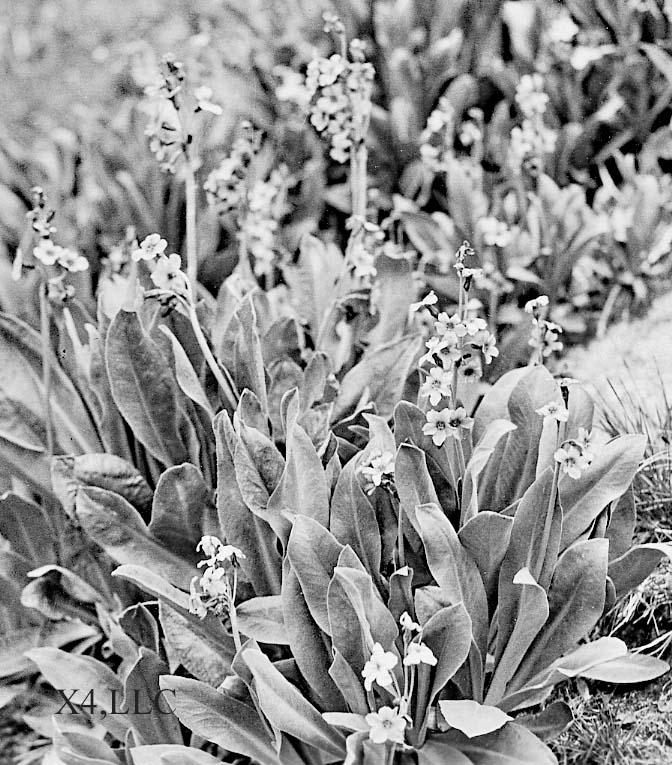
False Hellebore 1934. Perry’s Primrose, 7-20-1930.
At lower elevations there is a very common and beloved
flower, the Harebell. Found everywhere in Montana, Campanula
Rotundifolia grows in grasslands, meadows, open forest,
exposed slopes (even cliffs) and ridges. These little blue bells
on long stems are found at many elevations. FYI, the root has
been chewed in the treatment of heart and lung problems. An
infusion of the roots has been used as ear drops for your sore ears,
while a decoction of the plant has been drunk or used as a wash in
treating sore eyes. Alongside you will see my favorite, the Mariposa
Lilly or Calochortus Nuttallii. It is white to purple-tinged and
yellow at the base. It grows on rangeland, plains and valleys,
often among the sagebrush. It’s also known as Butterfly Weed,
Sego Lily (Utah’s state flower), and Indian Potato Plant.
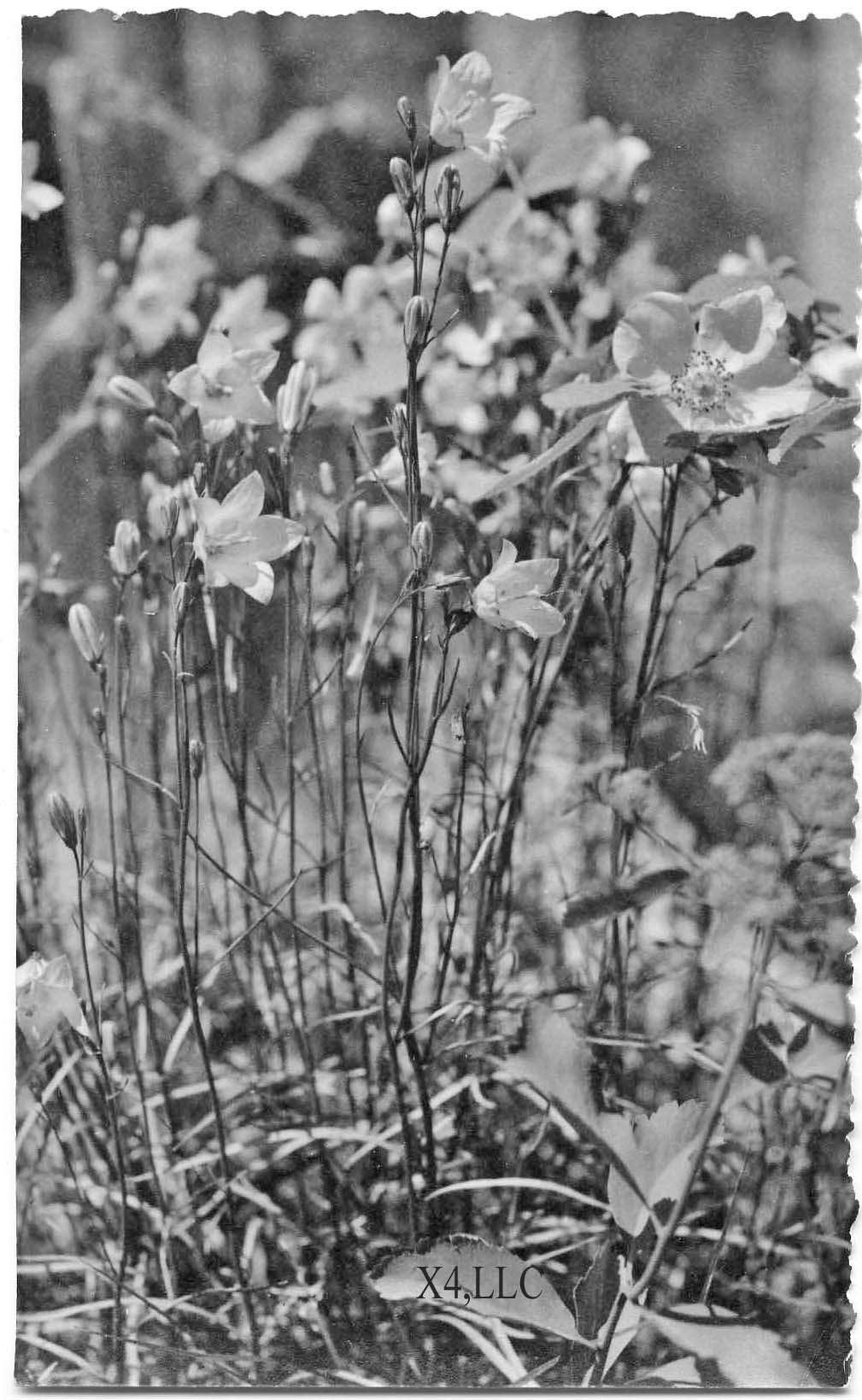
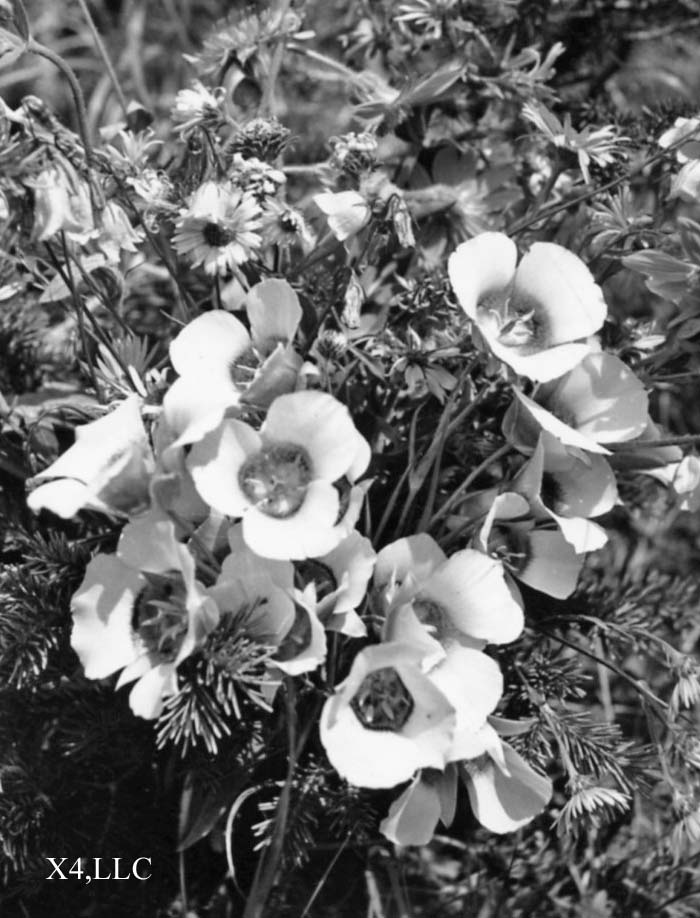
Harebells Mariposa Lilies
I hope the view of these flowers brightens your day. I will
close with one more plant rather well known to pioneering families,
the small Soapweed Yucca. It’s native east of the Continental
Divide in Montana, but due to its showy stalks of white flowers
it’s also found west of the divide too. It grows well in stony or
sandy soils in grasslands, badlands, plains and valleys. The roots
of the yucca provided many native Americans and subsequent
pioneers with natural shampoo and laundry soap. You have to
pulverize the root into a pulp. When the mush’s color has changed
from white to light amber, your new shampoo is ready to be used,
dried, or frozen. Besides its use as a soap, people have used
soapweed leaves for making mats and cordage. The plant also
provides food and nesting sites for small mammals, birds and reptiles.
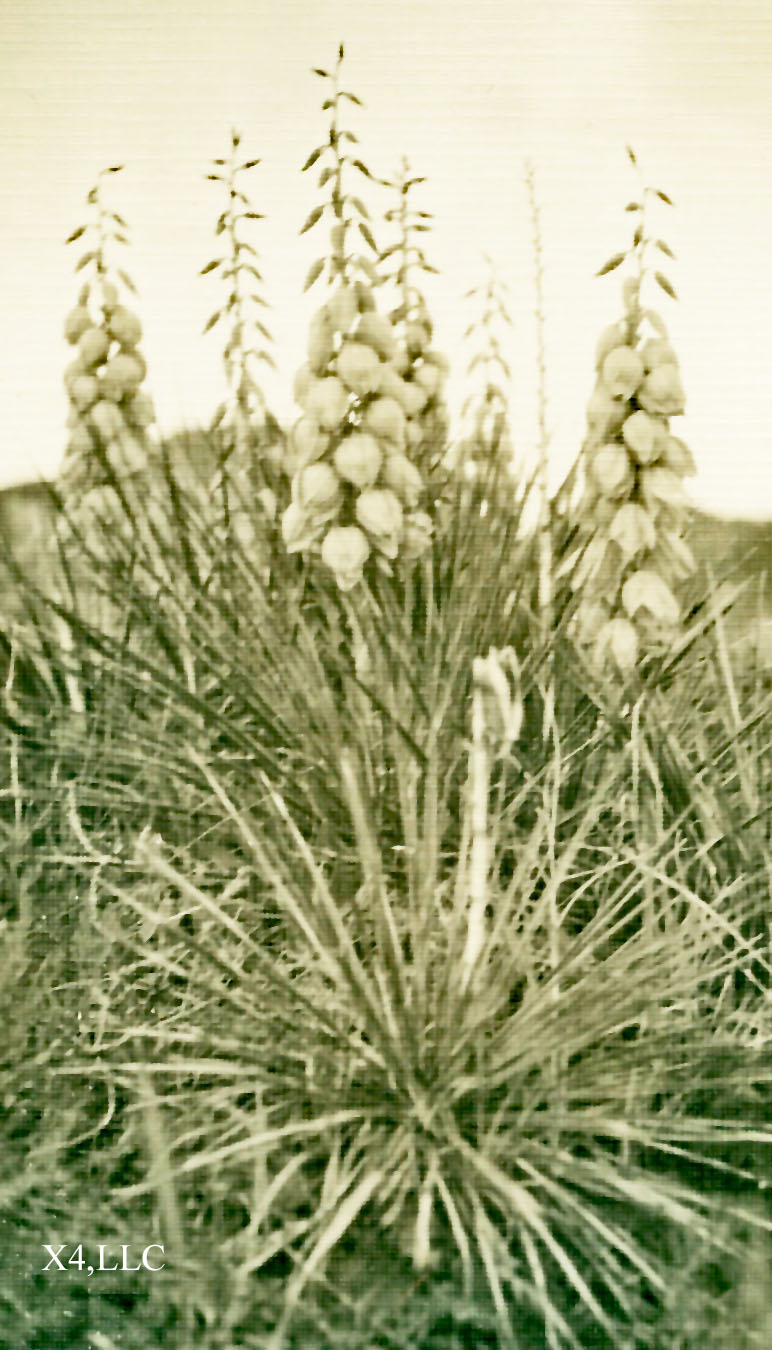
For additional exciting and wonderful photos check out my website
at https://tempejavitz.com/
My book, “Bighorn Visions, the Photography of Jessamine Spear Johnson,”
is available for preorders now and launches April 11th. Go to:
https://www.sdhspress.com/books/bighorn-visions
Cowboy Jargon:
Whispering Bells: These are California yellow bells which dry on
the stem and make a rustling sound in a breeze.
